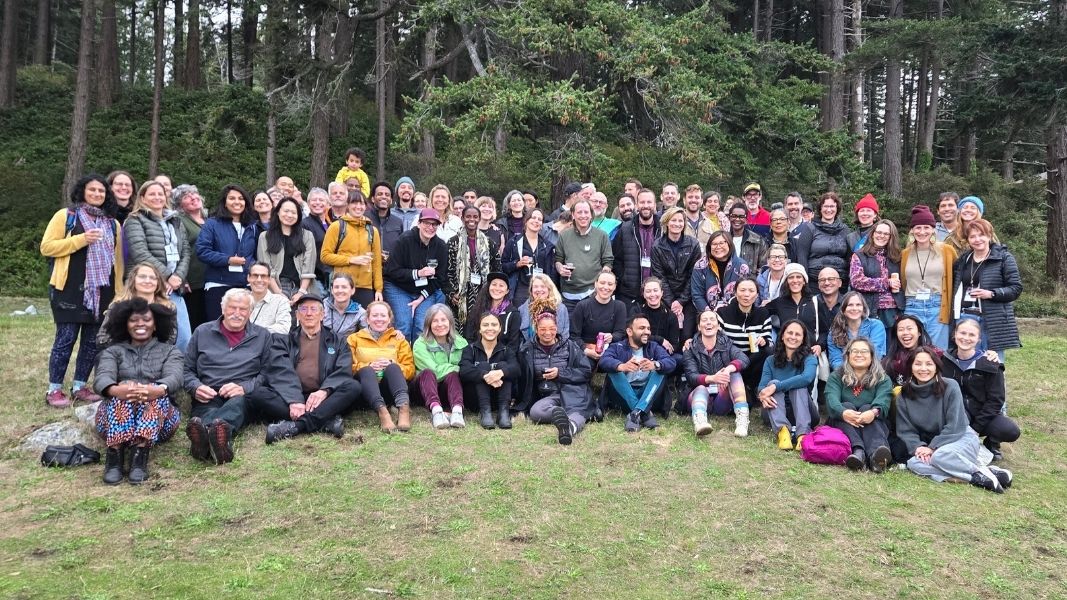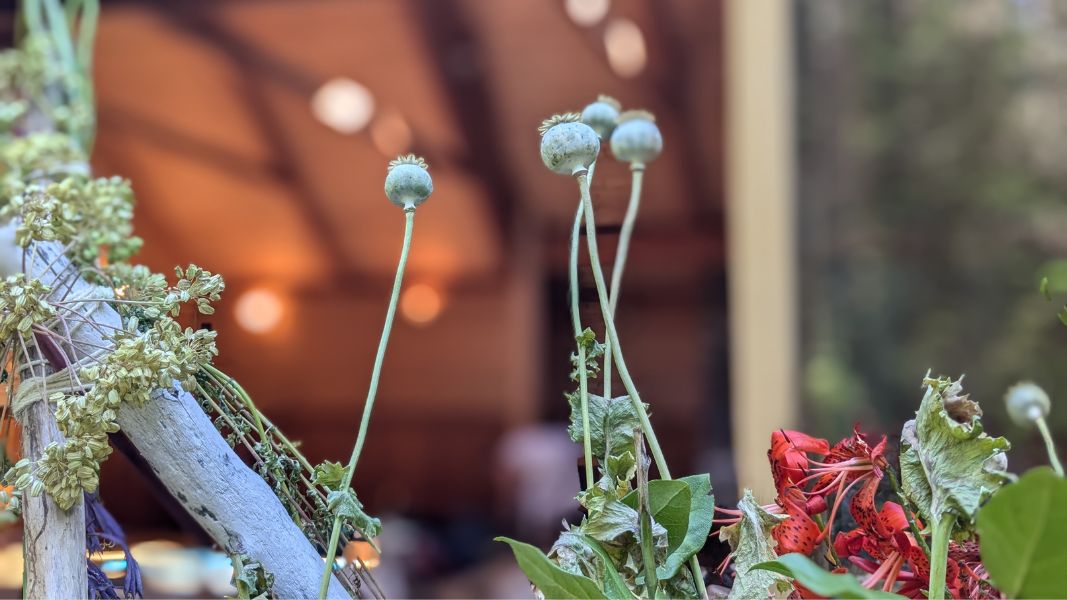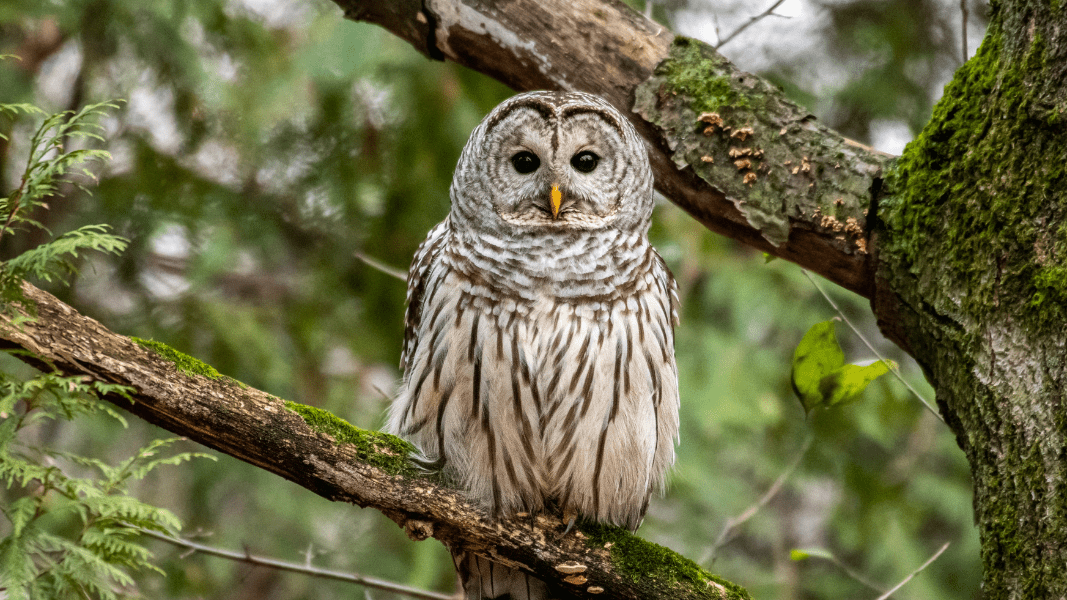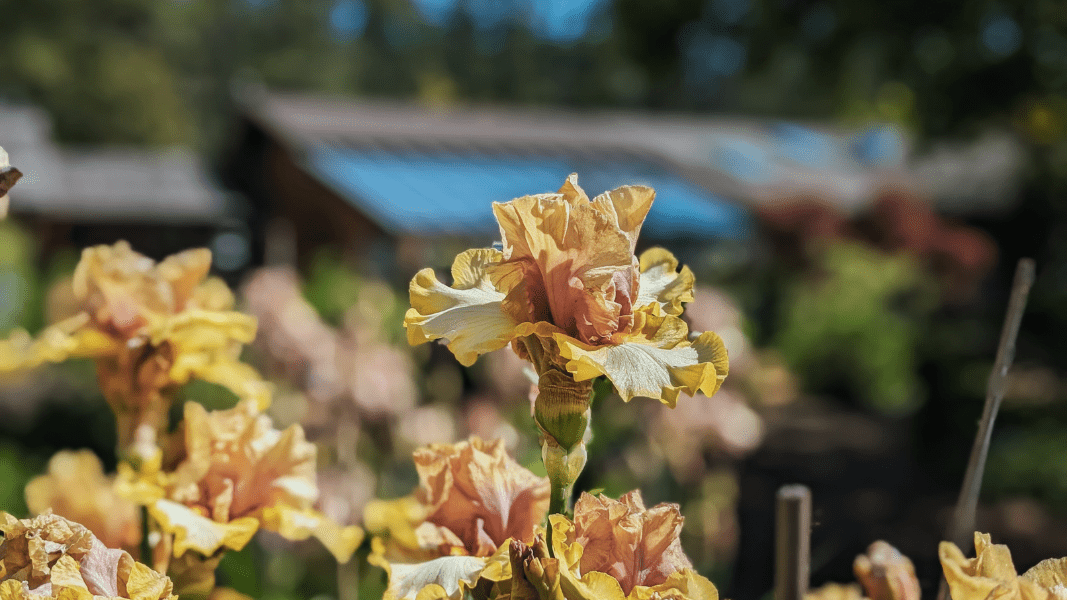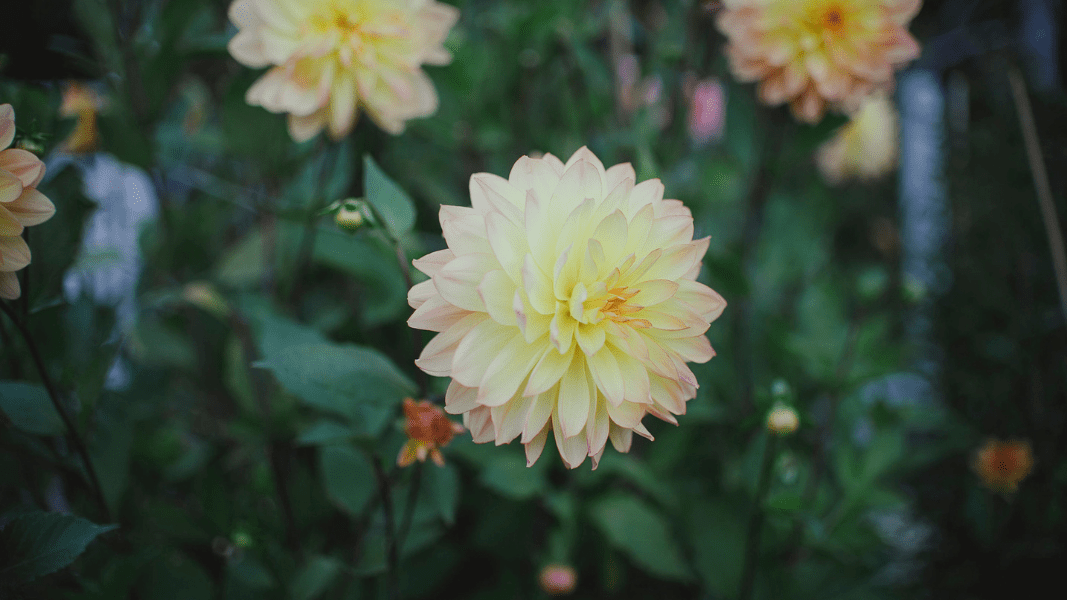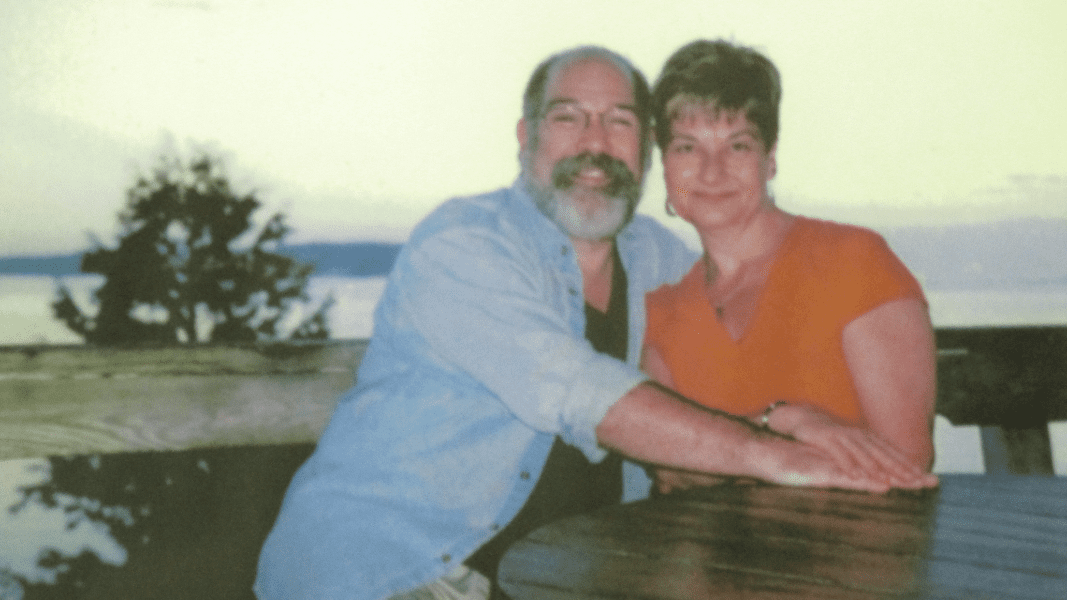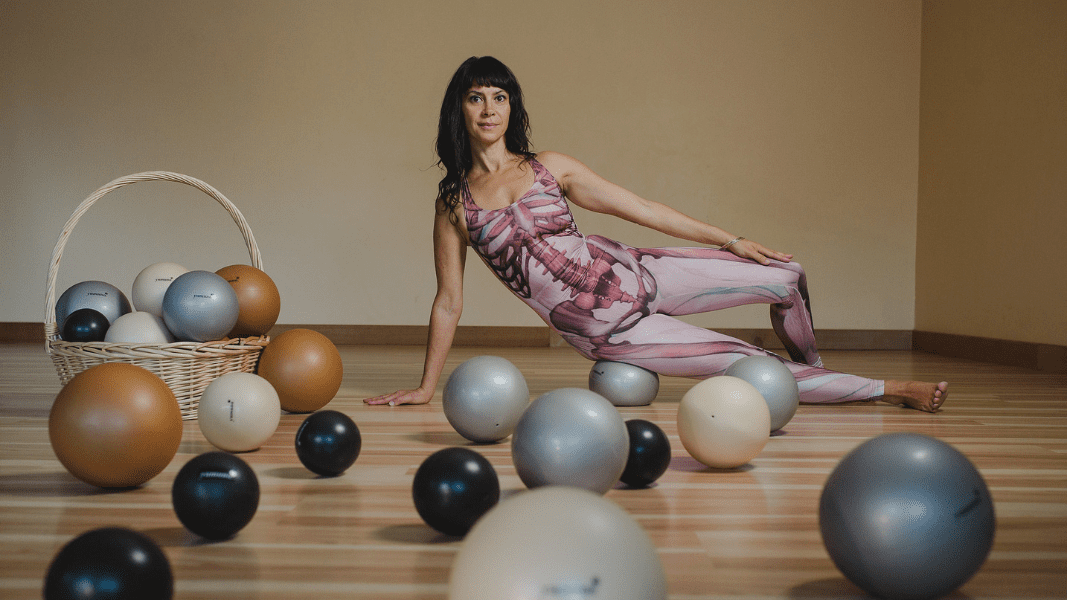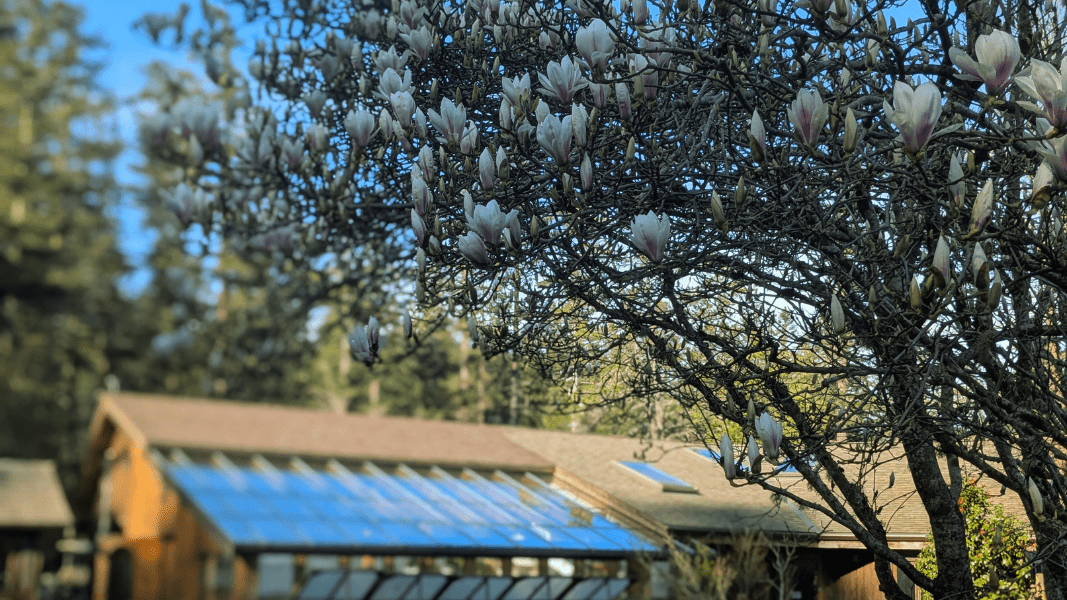Breathe.
The beauty of the breath – symbolically the rise and fall of life. Long-time Hollyhock presenter, Robert Beatty, guides us through this daily meditation practice revealing the lessons found in wandering and self-judgement, and its interconnection to self-awareness.
Feel every facet of your being and come home to yourself everyday.
Join us in October as Robert leads Mindfulness Meditation, an awakening of freedom, love, compassion, and joy that is our natural state.
Transcript
As you begin this experience of Vipassana meditation, it will be helpful to sit in a comfortable, upright posture. You may have your eyes closed or open and softly downcast. This formal sitting meditation will help you to create the foundations in the mind, upon which you can develop the ability to turn all of life’s activities into the experience of mindfulness.
It is recommended that you listen to this tape at least once daily practicing along with it to gain a sense of the flavour, rhythm, and balance of this practice. In addition, you can enrich your experience by finding other moments throughout the day to use the self-observational skills you are developing.
Now, taking up the practice – we will be intentionally cultivating two powerful mental factors or abilities; these are concentration and mindfulness. Concentration is that ability of mind that allows us to focus on one object and stay there. Mindfulness is an all-encompassing awareness which allows us to notice what’s going on in the body and the mind in successive moments of consciousness.
You now have an opportunity and invitation to turn your attention inward to rest from the usual activities of mind for a few moments. As you turn inward, it can be with a questioning attitude; a kind of interest, “what is going on in this moment?”, “what invitations to awareness are present?”
We can begin with the simplicity of the body. What sensations are occurring and your hands right now? You don’t need to do anything, simply attend what aliveness invites your awareness and your fingers. Or you might let your awareness inhabit your thighs and buttocks where they press against the cushion on the chair.
There’s no need to go grasping after sensation simply opening the awareness in that region. Or you might allow the attention to inhabit your feet, your legs. What sensations are present now?
Please be invited to notice the aliveness in your tongue and your lips. You might observe whether the tongue is soft and resting in the cavity of the mouth. If it’s not, simply soften into it.
So here we have a body sitting which provides a context for practice; a homebase in our lives. What other regions of your body are alive and full of sensation right now? You might notice coolness… or warmth. I’m going you might notice regions which feel comfortable or uncomfortable. You might even be able to have a sense of the entire body as it sits here; a form, a shape.
Here we have a body that sits. We have also a mind which is capable of knowing there is a body sitting here. Somebody sits here.
And now to refine the attention, we can take up mindfulness breathing within the context of the body sitting. To do this, let yourself become aware of the sensations in your chest and abdomen, in your torso as the body breathe naturally. There is no need to control the breath, simply let the body breathe itself. The effort to be made is to become aware of the breathing. Attending to the sensations of the breath with their attention which means there’s no need to interpret the sensations, simply meeting them with awareness.
Notice how the breath comes and goes
You can notice that each breath has a beginning, a middle, and an ending. Cultivate a mind which is capable of noticing very intimately, very precisely, these beginnings and endings.
As an aid in directing the attention toward the breathing, you might undertake the practice of noting as the body breathes in say quietly in the mind rising as the chest and abdomen rise. As the body breathes out, quietly note falling.
So there is a stream of rising… falling… rising… and so on. Most of the attention stays with the sensations in the body and a small percentage of attention is with this noting.
Of course the mind wanders. Each time you discover the mind wandering, then gently return the attention to the sensations of breathing. From the very outset, this is a non-violent non-coercive practice. Whether the mind has been wandering for a tenth of a second or 10 minutes, it doesn’t matter. Each time the mind wanders and is noticed, it’s a strengthening of mindfulness. Each time one gently returns the attention to breathing, it’s a strengthening of concentration as well as a model for treating yourself gently. So attending as intimately as you can, as precisely as you can, to the beginning of the next breath.
The mind has a mind of its own. it is deeply conditioned to wander, to worry, to plan… to sort things out. Whatever it’s doing simply notice, “Ah! Wandering mind.”
Gently, yet firmly, return to the breathing. Rising and falling.
Noticing there’s a body sitting here it should share and breathes – and the mind wanders. Come home to yourself, come home to breathing. Rising, falling; noting a wandering mind as wandering.
Another common aspect of mind is the judging mind. You may be discovering that your concentration is strong and that meditation feels good and the mind is judging, “Ah! This is good; I am doing it well.” Or oppositely, the judge may be saying, “I’m not doing this well enough.”
The mind should be under greater control. Simply noticing this judging mind in the same nonviolent, noncoercive way, “Oh yes, a judging mind!” And releasing this, return to the breath gently, firmly to the rising and falling.
This is the practice of no enemies. Whatever arises as you practice, is simply noticed, received in a field of awareness.
And using the breath, you have a guide or home base with each rising and falling. Rising and falling, wandering… judging.
Even sounds are not distractions as you practice. When sound vibration strike the eardrum, hearing-consciousness arises spontaneously; it also passes away.
Simply notice hearing. Return to the rising and falling.
Practice precision in noticing the beginning of the breath, the very instant when the breath begins. Attending through the entire process of the rising, noticing that moment when breathing in ceases and breathing out begins. Attending to the entire process of falling, or breathing out, and notice the moment of ending.
Rising and falling cultivating concentration and mindfulness. You can be reassured that the goal of this practice is not to stop the mind instead it is to develop enough tranquility and concentration to begin to develop wisdom concerning the nature of this mind, the nature of this body, both of which are in constant change. So come home to this breath; come home to this body which sits here; come home to an awareness of the movements of mind.
Using the breath as your guide become intimate with the sensations arising spontaneously in the tissues and the bones of your torso as the body breathes itself. It’s helpful to remain interested, to be curious what is occurring in this body mind process right now. What can be learned about change, about aliveness, about beginnings and endings.
And now you might like to continue to practice after this tape ends or it might be time to come out of this formal practice session. If you wish to end at this time, take another moment to attend to your breathing. And then notice the form of your body which sits here. Notice sitting. What sensations invite your attention?
You might notice your hands… your feet. You might notice the sensations in your cheeks, your eyes. Be open to whatever aliveness there is in your body right now and as you have been cultivating a capability of observing body feelings in-mind, let yourself now notice the intention to let your eyes open and then let them open slowly, gently, observing the fact that seeing occurs – mindfully seeing. And often we like to stretch after sitting. Let yourself notice the impulses to move and then take the sensations in your body as you stretch; as your meditation objects, and in this way you can carry mindfulness and concentration from this formal practice and into your daily life.

